6 Benefits of Learning on a Digital Piano
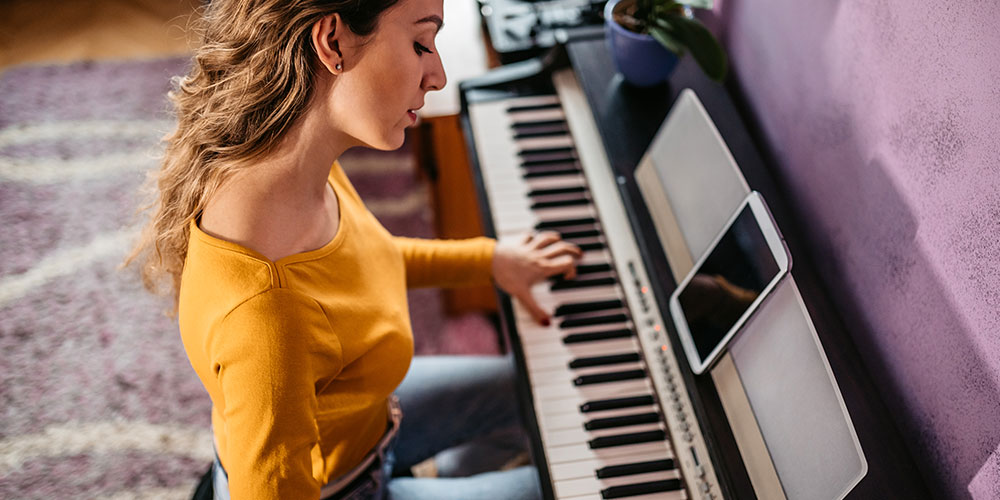
Perhaps you’re thinking about learning the piano, or perhaps wanting to upgrade from an electronic keyboard, or maybe even looking for a more manageable instrument than the heavy, out-of-tune ‘upright’ in your living room.
Also, if you’re deciding whether to buy a Digital Piano, you may well be wondering if it’s possible to learn to play on a Digital Piano, or whether learning on an electronic piano is really a good idea.
In simple terms, YES! Buying a digital piano is a very sensible (and often very fun) decision to take. Digital pianos are not just for beginners. Not at all. Musicians of all levels can benefit from the wealth of advantages that Digital Pianos can offer you. Let’s explore them here:
THERE ARE 6 MAJOR BENEFITS WHEN COMPARING A DIGITAL PIANO TO AN ACOUSTIC PIANO:
- Smaller size: Digital Pianos are generally smaller in size than an acoustic piano.
- Lightweight: Digital Pianos are usually far lighter in weight than acoustic pianos, so carrying a digital piano from room to room, or upstairs, is much easier than an acoustic piano.
- Lower Cost: A new digital piano will usually cost less than a new acoustic piano.
- No tuning: Digital Pianos don’t need tuning, unlike acoustic pianos that require regular maintenance to keep them in tip-top condition.
- Volume Control: You can control the volume of a digital piano and use headphones too. So quiet or even silent practise is now possible.
- Added Features: Digital Pianos can offer a greater amount of fun whilst learning thanks to features such as a selection of different sounds, learning games and recording functionality too.
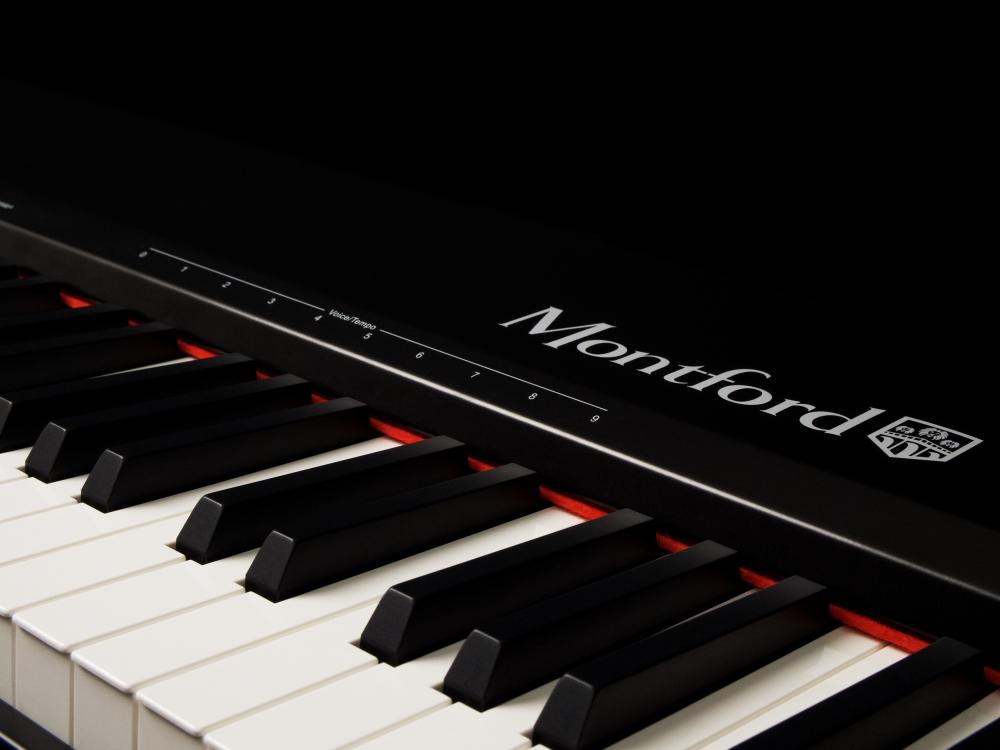
WHAT ARE THE MOST IMPORTANT ADVANTAGES OF A DIGITAL PIANO?
Although the feel and sound of a real piano cannot be ‘beaten’, the traditional piano’s electronic counterpart has some significant advantages, six of which we have laid out above. So, with most modern digital pianos already feeling and sounding incredibly similar to ‘real’ pianos, we are free to focus on the more physical benefits offered.
PERHAPS THE TWO MOST SIGNIFICANT BENEFITS ARE THAT OF SIZE AND WEIGHT.
Throughout popular culture, one of the most frequently used comedy tropes is that of two witless suspects trying to manoeuvre a piano up a slope, into a tight space, onto a truck or even up some stairs. This recipe for comedy gold comes from the fact that anyone who has tried it knows that moving a 'regular' piano is not a fun thing to do. They’re big, cumbersome, really very (!) heavy, tend to damage walls when scraped against them and also really hurt when they accidentally trap your foot on the stair.
Oh, and expensive if they’re dropped too.
However, digital pianos solve all these problems by simply being smaller and lighter than a ‘real’ piano. They will usually be delivered in a box that can be lifted pretty easily in and out of rooms or up and down stairs.
And once setup, they're simple to move about and position in any space, whether a living room, dining room, bedroom, music room or rehearsal room. Plus, if you change your mind about the where it should go, you don’t need a team of weightlifters on hand to facilitate the relocation.
THE OTHER OBVIOUS BIG WIN FOR DIGITAL PIANOS IS THAT OF NOISE - OR THE LACK THEREOF.
Very few parents have ever uttered the phrase “Oh, I wish our children could practise their scales at a much higher volume.” Unsurprisingly, some parents may think it a blessing if the volume could be reduced while their gifted offspring played that piece. Again. And again.
On a more serious note, there are in fact many benefits to volume control and headphone use. Whether you’re the parent of a beginner, a beginner yourself, an enthusiastic amateur or a seasoned professional, the control that a digital piano gives you can be life changing.
Writing this as a pianist myself, although I admit the idea of a large concert hall with a huge grand piano is most appealing, reality dictates that most of the time I will be playing piano at home, when the kids are in bed. Playing your digital piano, you'll be able to play at any time that takes your fancy, as you can reduce the volume or even wear headphones. In fact, late night piano sessions with headphones can be some of the most musically intimate and satisfying sessions you’ll ever have.
You can’t turn down the volume of a ‘real’ piano, but with a Digital Piano you can.
- Want to play late at night? You can.
- Need to practise in the same room as another family member watching TV? No problem.
- Your child needs to practise in the same room as another youngster doing schoolwork? All good.
- You live in an upstairs apartment where noise is a concern?
Having a piano that can be played quietly or silently is really handy.
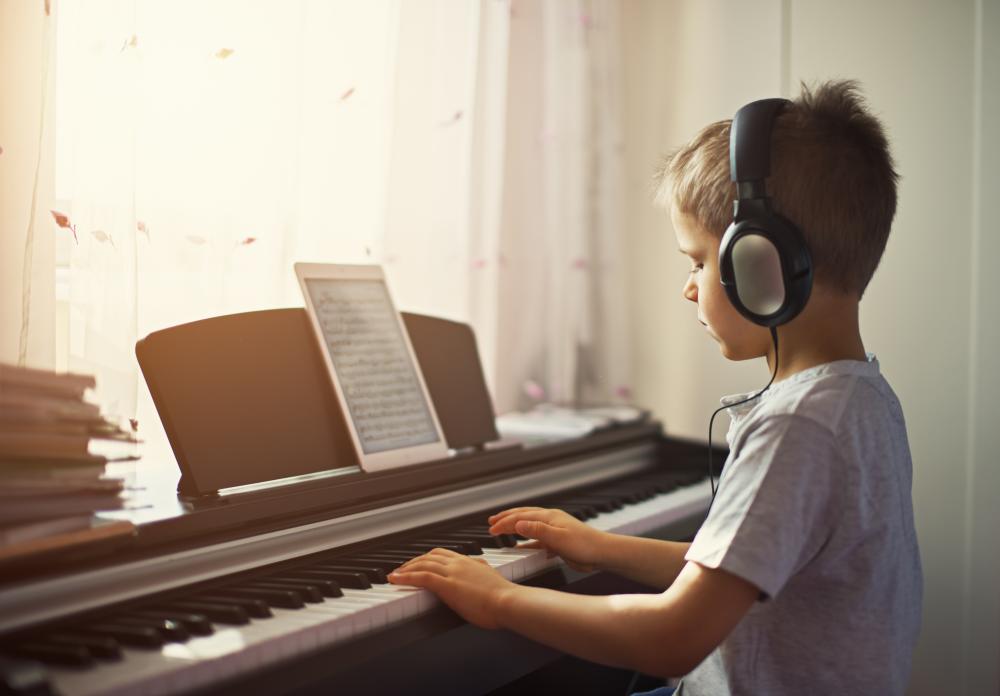
NOW YOU'VE DECIDED THAT A DIGITAL PIANO IS A GOOD IDEA, WHAT SPECIFICS SHOULD YOU LOOK OUT FOR?
The 3 Most Important (musical) Features of a Digital Piano are:
- 88 keys – The same number of keys as a real piano. Although fewer notes will be ok for a short while, as you progress along your musical path, the need for the full range will quickly become evident.
- The keys must be Touch Sensitive – This means that when you play lightly, the piano is quiet but when you play hard, its louder. This allows you to create the required dynamics of any piece of music.
- The keys should have a weighted-feel.
Real pianos have hammers that hit strings to make a sound. This gives them a natural weighty feeling. So all good quality digital pianos imitate this as best they can. The more expensive digital pianos will have more advanced ‘hammer-action’ keyboards, but even more entry-level instruments will deliver a good imitation of this all important feel.
BUT WHY ARE THESE FEATURES PARTICULARLY IMPORTANT?
You need to be prepared for the real thing.
Imagine you’re about to sit your grade 2 exam at your local music school. You turn up ready to play, with your grade-piece book under your arm. You wave at your music teacher who is expectantly waiting for you, wishing you the best, outside the examination room.
As you enter the room and catch your first glimpse of the examiner - who happily isn’t quite as scary as you perhaps first feared – you notice the huge great instrument in the corner. Although you’ve practised and worked hard at home, you’ve never really played a real piano or anything even resembling one.
As you sit down, getting ready, you feel somewhat intimidated by this huge keyboard in front of you. It feels heavy and different compared to your small electronic keyboard at home. Playing your pieces, although possible, is not as easy as it would have been had you been used to the feeling of a piano rather than a smaller electronic keyboard.
Although not everyone will have the opportunity or space to have even the most modest of digital pianos, this story is just an example of giving yourself or your child the best chance to perform in any circumstance. So, to whatever level possible, investing in a digital piano with 88, touch-sensitive, weighted keys will always be the best option.
WHAT COMES IN THE BOX WHEN YOU BUY A DIGITAL PIANO?
Most digital pianos are comprised of 2 major parts:
- The top part - the ‘piano keyboard’ bit - with the keys, the music stand and usually the speakers.
- The Floor stand, which also often houses the two or three pedals you’d find on an acoustic piano.
NB: Although most digital pianos are as described above, some are actually supplied without any kind of stand and instead need to be placed on a table or perhaps a sturdy keyboard stand instead. Conversely, some other digital pianos come with very elaborate cabinets and stand arrangements made of many parts.
Digital pianos will need to be powered via a mains electricity cable, either directly attached to the instrument or via an adaptor. The Montford DP9 piano, for example, is supplied with both a UK 3pin mains transformer and a 2 pin European version too.
At the back of most digital pianos there will be sockets for the piano pedals (always one, if not two or three), a headphone socket for silent practise and a USB socket for connecting to a computer.
DO DIGITAL PIANOS SOUND ANY GOOD?
Yes! They really do. Unsurprisingly, the very best digital pianos – that cost the most too – sound absolutely incredible, with some even built to the same dimensions and weight as an acoustic piano…. which you could argue defeats the object somewhat.
But, the question is really “do digital pianos sounds as good as a real, acoustic piano?” That really depends on what exactly you’re comparing. If you can afford a beautiful acoustic piano, then it will likely sound more like a real piano (!) than any digital piano, for obvious reasons. But remember all the benefits that the digital piano will bring.
A great sounding digital piano will allow you to turn it up and down and play and practise in silence. And it will never need tuning… or 6 months of weight training in advance of any change of location.
WHAT ABOUT OTHER SOUNDS?
On top of the regular piano sound, you will likely also find that your digital piano has at least a few other sounds on it too. Most commonly you will find an Electric Piano sound (in the funky Stevie Wonder or 80’s rock ballad style); a Harpsichord (for all the Baroque and Early Music fans); a vibraphone (for all the 70’s jazz classics you know); a pipe organ or church organ (for Sundays, obvs); and perhaps a very lovely orchestral string section too. Even this small set of extra sounds can offer hours of additional musical intrigue, fascinating players of all ages with their unique timbres and opportunities for experimentation.
However, some digital pianos offer even more sounds, even if they’re not immediately obvious. The Montford DP9 has a total 128 sounds with most of them discreetly hidden away, but within easy reach once you know how. As a pianist first and foremost, you’ll know that what is most important is having a piano sound immediately accessible. However, when you fancy a dose of extra fun or creative inspiration, the sound of an accordion, flute, trumpet, guitar or drum kit is only a couple of button presses away.
WHAT OTHER EXTRA FEATURES CAN YOU EXPECT FROM A DIGITAL PIANO?
Now you’ve got your digital piano and it feels and sounds just like an acoustic piano, and you’ve even explored a few of the extra ‘hidden’ sounds on offer, what else can you expect to find on this new instrument? The most common extra features would be reverb and chorus functions, both of which are available on Montford's DP9 model.
So what is Reverb, and why would you want it on your digital piano?
Imagine clapping your hands in your front room and then doing the same in your bathroom or garage. You already know that the sound you hear bounce (or reverberate) back off the walls would be markedly different depending on the environment.
Using that example, the reverb function on your digital piano is conceptually placing the piano sound that you hear in a different environment – such as a large room or concert hall. What this means in practise is that the piano sounds a little more ‘polished’ and like you’re playing it in the Albert Hall / Carnegie Hall / the Paris Opera etc, rather than your front room. Turn it on and listen to the difference it makes, especially when playing slower pieces of music. Reverb can add a lot of ‘air’ to even the most basic of sounds.
What about Chorus? What does that do?
The Chorus effect is essentially playing a number of copies of the same sound, slightly detuned, to create the sound of a ‘chorus’. When a choir is singing in unison, even if they’re all singing in ‘tune’ there will be very slight differences in timing and tuning from person to person, and it’s that variation that makes the sound ‘thick’ and ‘lush’.
By applying the same treatment to sounds on the digital piano, you can make the piano sound like a ‘honky tonk’ piano suitable for ragtime tunes; or make the Electric Piano really rich and thick and ripe for a power ballad.
Like all ‘effects’, Reverb and Chorus are not essential to your learning the piano, and you can choose to ignore them if you like, but if you enjoy the process of making music and experimenting too, then they can be great creative tools to have in your musical toolbox.
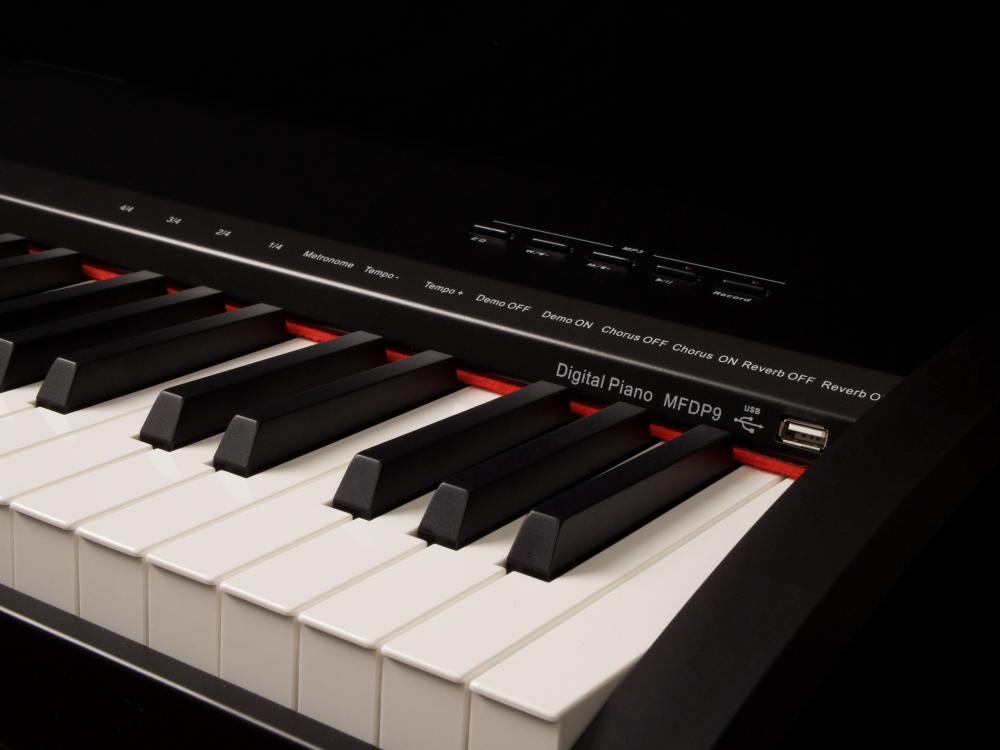
CAN A DIGITAL PIANO HELP YOU LEARN & PRACTISE?
Firstly, nothing can replace hard work and dedication, or in fact the satisfaction you’ll feel when that practise pays off and you’ve passed that next grade or played that new piece to your friends.
However, there are a few handy features on many digital pianos that will definitely assist your musical growth.
The Metronome:
Metronomes are an essential tool when learning or rehearsing, as they provide a simple rhythm with a set tempo – or speed - to play along to. Learning to play to a metronome makes it much easier in the future to feel the tempo of a piece of music, and even recognise the time signature – 4/4 or ¾ etc.
It is very common to find a traditional clockwork metronome perched atop an acoustic piano, but of course, with a digital piano such things can be integrated.
On the Montford DP9, you are able to use the internal metronome to help keep your playing in time, increasing and decreasing the speed as required.
Recording and Playback:
On many digital pianos there is the ability to record what you’re playing and then play it back. This function allows you to listen to yourself playing and assess areas that may need more focus, or maybe just listen back to your new masterpiece in all its glory.
Various digital pianos and keyboards will have different ways of making this happen, but the Montford DP9 Digital Piano has a USB socket on the front. Just pop in an empty USB memory stick and record to your heart’s content.
USB Connectivity to apps and computer programs:
This is a big subject and one for another article entirely, but most digital pianos (and keyboards) have a USB output on the back for connecting to other device. (NB: This is not the same as a USB input on the front for recording purposes)
By using the USB output, your digital piano can be connected to various apps and programs on your PC, Mac or Tablet, many of which will doubtless assist with learning or allow multitrack recording etc. But we’ll stop there, as we’re straying too far off-topic. If you want to explore this further, talk to your local music store who will offer their expertise on the matter.
IN SUMMARY:
Why is a digital piano a good choice for you?
- Digital pianos are smaller than acoustic pianos.
- Digital pianos are lighter than acoustic pianos.
- Digital pianos usually cost less than acoustic pianos.
- Digital pianos are much easier to lift and relocate than acoustic ones.
- Digital pianos do not need tuning.
- Digital pianos include volume controls and headphone sockets. Silent practise is now possible!
- Digital pianos can make learning more entertaining with different sounds, learning games, and recording capabilities.
Hopefully you’re now excited about getting hold of a Digital Piano. We would obviously recommend the Montford DP9 that we have referenced in this article – which you can find online and in your local music store. But overall, take some time to talk to your music teacher or your local music store. Ask their advice in person and wherever possible, touch and feel these instruments.
Music is a wonderful gift that is woven into the very fabric of all our lives. Its importance shouldn’t be undervalued, and neither should the instruments designed for musical creation.


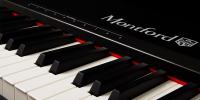
.jpg)
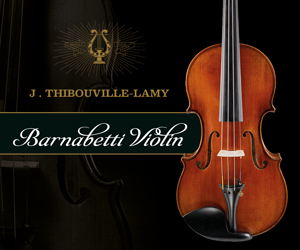


 animated.gif)

